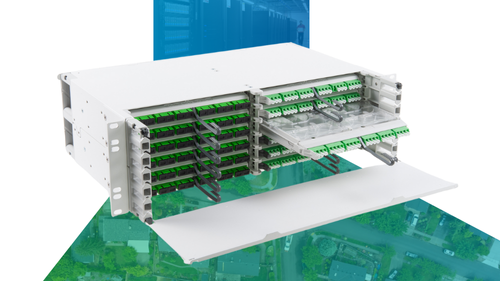
There are six trends in particular that should be top-of-mind for operators.
Bandwidth Surge
The pandemic has played an unprecedented role in the significant, immediate, and global uptick in broadband network traffic— busy-hour average downstream bandwidth grew by up to 25% in one month’s time, and busy-hour average US bandwidths grew by up to 50% in one month’s time. A new emphasis on remote work, virtual education, and video-driven applications for billions of people have created an obvious bandwidth challenge and for the majority of operators, the biggest challenges have been in the upstream.
CLICK TO TWEET: CommScope’s Tom Cloonan provides you with six broadband network trends that should be top-of-mind for service providers.
Operators have been responding across the board with node segmentation and splits to stay ahead of new demand and operators with larger budgets are moving to next-generation mid-split and high-split designs. These will go a long way in enabling Gigabit Service Level Agreements (SLAs) later down the line. These changes, in conjunction with the greater penetration of orthogonal frequency-division multiple access (OFDMA) and DOCSIS 3.1 technologies are improving spectral efficiencies and driving up QAM levels. In essence, we’re seeing many planned upgrade programs taking place at an accelerated pace due to COVID-19.
Low-Latency DOCSIS
The emergence of low-latency DOCSIS is enabling a new ecosystem of applications and services that can take advantage of latency as low as 5-10 ms (and even lower in the future). Gaming, in particular, continues to drive much of the interest in low-latency DOCSIS, but we see it opening the door to broader consumer services, like Augmented Reality (AR) and Virtual Reality (VR) as well as business services, such as stock market trading, desktop as a service, edge computing, and cellular backhaul.
By delivering consistently low latency that offers a high degree of reliability and a low level of jitter and delay variation in packet delivery, operators will be able to power a new generation of time-sensitive, mission critical services.
DOCSIS 4.0
Over the next year or two, we’ll see operators beginning to install higher frequency taps, followed later by amp and node changes in preparation for future migrations to DOCSIS 4.0 (D4.0). Although full D4.0 deployments won’t arrive for some time, these phased upgrades leading to D4.0 are still important steps toward a 10G future. These upgrades will be part of forthcoming decisions to pursue Extended Spectrum DOCSIS (ESD) or Full Duplex DOCSIS (FDX).
Migration to distributed access architectures (DAA)
Momentum for distributed access architectures (DAAs) is picking up globally. We’re already seeing increasing investments and deployments from leading operators in both Remote PHY and virtualized functions like CMTS. This year, we’ll see remote management systems building on those approaches, as well as the beginnings of lab and field trials of Remote MACPHY architectures.
DAAs take advantage of cloud native environments and technology to expedite time-to-market for various virtualized network services and features. This, in turn, is opening the door to a higher degree of network automation. With DAAs in place and virtualized components providing unprecedented network visibility and remote management capabilities—features like Artificial Intelligence (AI) and zero-touch provisioning are just around the corner and will make it easier than ever to operate and optimize the network.
Passive Optical Networks (PON)
A number of leading operators are looking to passive optical networks (PON) as another pathway to 10G. The key for many operators making the eventual leap to FTTH, will be building on their HFC investments and passive components to expand into active, software, and service capabilities that can deliver higher speeds.
One promising area of development is remote optical line terminals (R-OLT) which enable operators to push computing closer to the customer edge. These modules, when deployed into HFC networks within existing fiber nodes, enable symmetrical multi-gig speeds. The ability to support 10G PON as well as fiber deep upgrades, will make it a compelling choice for operators looking to take immediate advantage of broadband spectrum expansions in addition to virtualized and distributed access architectures, while reducing capital and operating expenditures.
Together, these developments are making it easier for operators to choose a path to network evolution that suits their goals and existing investments, while also accelerating upgrade schedules in response to near term drivers like the COVID-19 crisis. And these upgrades are happening in the context of three macro network trends we identified earlier last year: coverage, efficacy, and capacity.
Future Network Migrations
Network coverage and capability is expanding not only in metropolitan areas but also in rural markets. This infrastructure investment sets the stage for new applications, like smart cities across broader, denser networks. We’re also seeing network efficacy improving, as wired and wireless networks overlap and converge—and operators see all extensions of their network as a single, cohesive entity. Finally, network capacity remains a top priority, with operators recognizing the need to deliver greater bandwidth to more endpoints in their network.
We expect all these initiatives to continue not just in 2021 but for years to come, expanding the capabilities of the world’s leading networks as operators take the next steps on their path to 10G.














